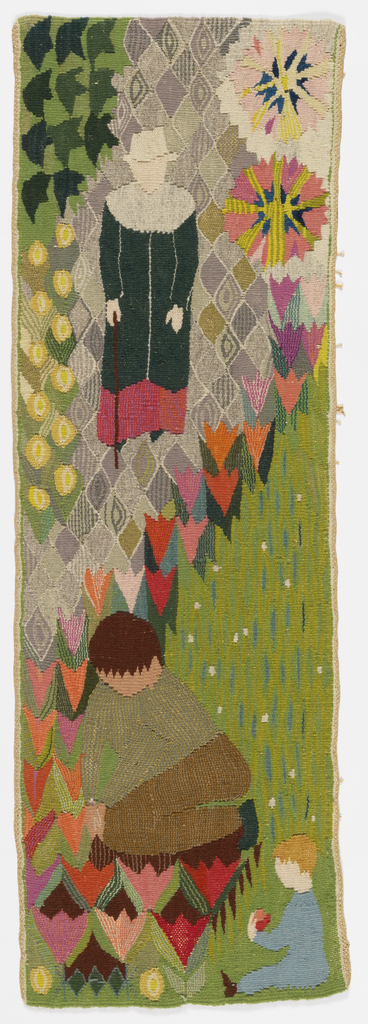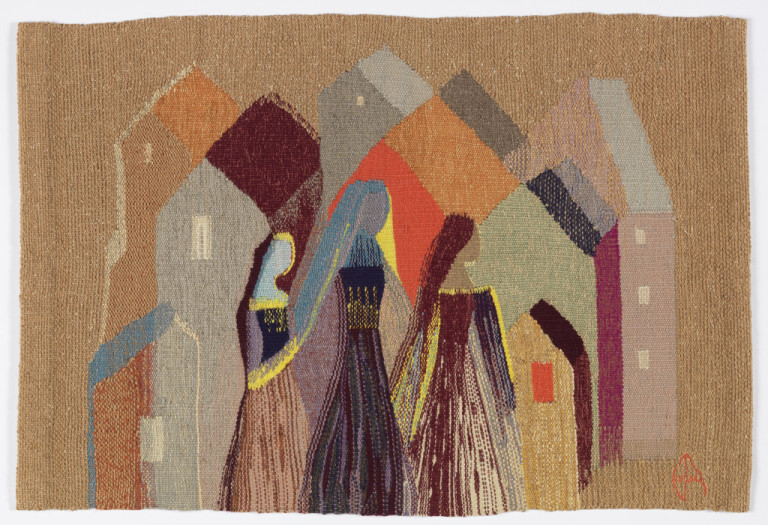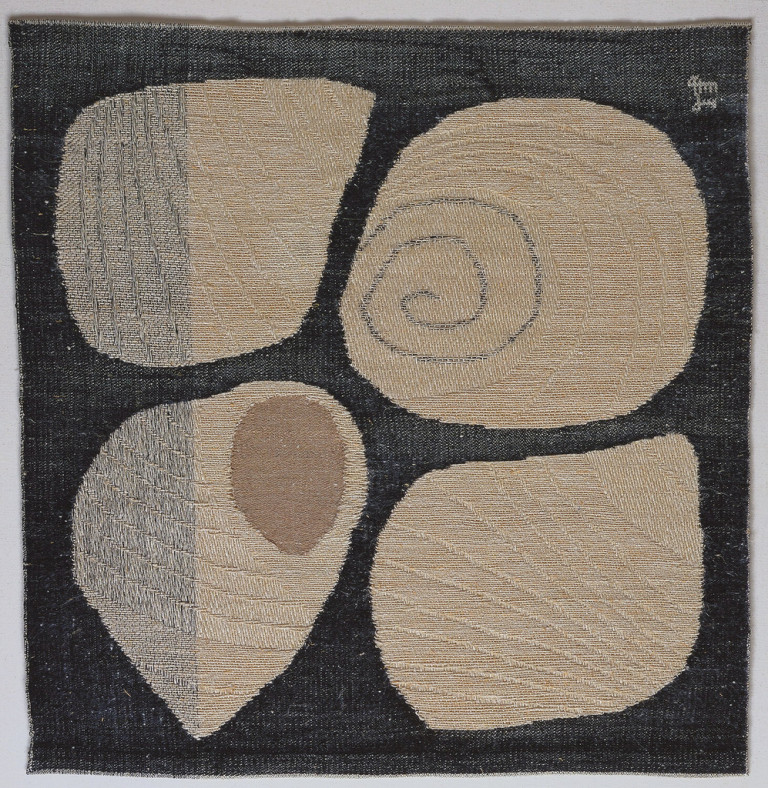In a 1971 article, Lenore Tawney’s studio was described as a “gymnasium sized” space filled with “clumps of projects in progress – feathers, egg shells, and delicate animal bones ready for inclusion” in the artist’s weavings and assemblages.[1] One can easily imagine Mourning Dove, pictured above, coalescing from these materials. Tawney is a revered figure...
Tapestry weaver Ann-Mari Kornerup (1918-2006) frequently depicted scenes of everyday life. Many include children. Kornerup was born in Stockholm, Sweden and studied at the Swedish School of Textiles, Borås. She moved to Denmark after her marriage to Danish architect Jørgen K. Ebbe and established a weaving workshop in Charlottenlund, outside of Copenhagen, in 1951. A...
California textile artist Lydia van Gelder (1911-2012) created this piece for the 1939 Golden Gate International Exposition (GGIE) in San Francisco. Having taken up weaving only several years before, her inclusion in the GGIE marks the beginning of a distinguished career as both an exhibiting artist and textile arts educator. Best known now for her...
Active from the 1940s through the 1980s, Finnish artist Eva Anttila famously wove, or had a hand in weaving, every tapestry that bears her name. With pieces now in the permanent collections of the Museum of Fine Arts, Helsinki, and the Victoria and Albert Museum, London, her work is considered an enduring expression of the...
Shells II is one of a series of four shell weavings created by Finnish textile designer Dora Jung (1906-1980). It features four tan shells against a dark grey background. As journalist Charles Talley observed in a 1985 article in FiberArts, the series epitomizes Dora Jung’s ability to “sketch” at the loom, working out and refining...




